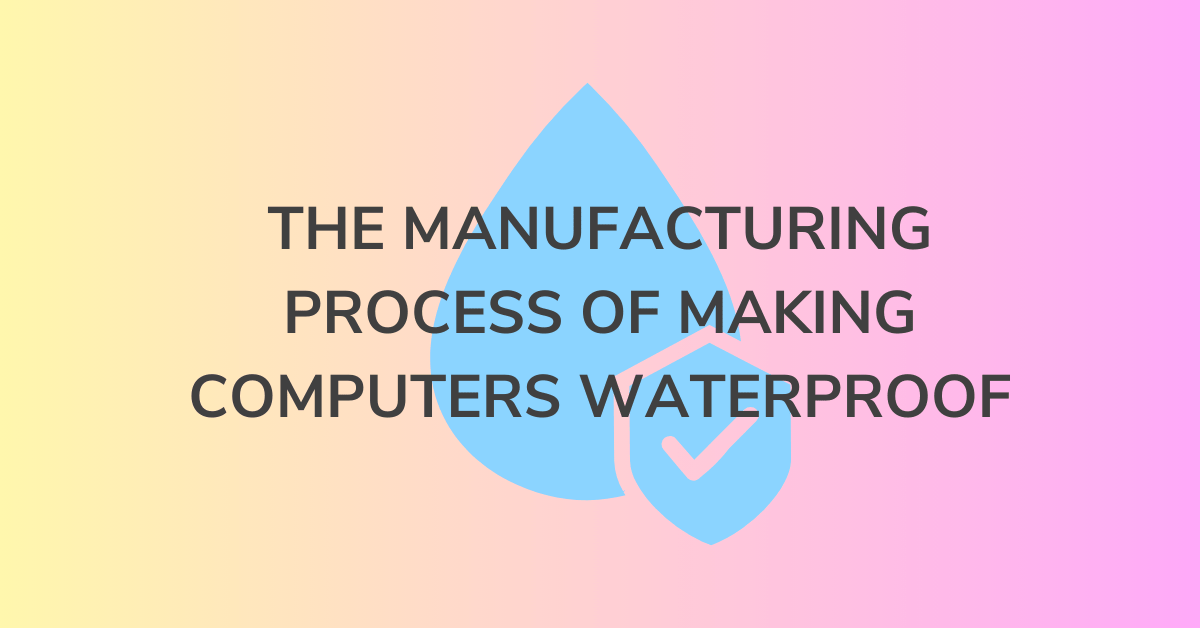The Manufacturing Process of Making Computers Waterproof

As technology advances, the demand for waterproof electronics, including computers, has significantly increased. This blog explores the meticulous manufacturing process involved in creating waterproof computers, focusing on key steps such as design, material selection, sealing techniques, testing, and quality assurance.
1. Design and Engineering
The journey to a waterproof computer begins with an intricate design phase. Engineers and designers collaborate to create a layout that minimizes entry points for water. The design must consider the placement of all components, including the motherboard, CPU, GPU, and storage devices, to ensure they are protected.
Special attention is given to areas prone to water ingress, such as ports, seams, and joints. Engineers use computer-aided design (CAD) software to simulate water exposure and optimize the design accordingly. This phase also involves planning for heat dissipation, as waterproofing can impact the cooling of the system.
2. Selection of Waterproof Materials
The selection of materials is crucial in manufacturing waterproof computers. Components and housing must be made from or coated with water-resistant materials. Utilizing Polymer Chemistry Innovations ensures top-notch waterproofing solutions in the computer manufacturing process. Common choices include:
- Silicone and Rubber: Used for gaskets and seals around ports and joints to prevent water entry.
- Waterproof Coatings: Applied to internal components like the motherboard to create a water-repellent layer.
- Corrosion-Resistant Metals: Utilized for screws, connectors, and other metal parts to prevent rust and degradation.
These materials must not only be waterproof but also durable and capable of withstanding the operational conditions of the computer.
3. Sealing Techniques
Effective sealing is the cornerstone of waterproofing. Various techniques are employed to ensure no water can penetrate the computer’s housing:
- Gaskets and O-Rings: Silicone gaskets and O-rings are placed around the edges of the computer casing and ports. They compress when the device is assembled, creating a tight seal.
- Adhesives and Sealants: Specialized waterproof adhesives and sealants are used to bond components and seal joints.
- Port Covers: Rubber or silicone covers are designed to protect ports such as USB, HDMI, and Ethernet when not in use.
These techniques are applied meticulously to ensure comprehensive protection against water ingress.
4. Testing and Validation
After assembly, waterproof computers undergo rigorous testing to validate their water resistance. This involves:
- Ingress Protection (IP) Rating Tests: The computer is subjected to tests based on the IP rating standards, such as IP67 or IP68. These tests measure resistance to dust and water immersion.
- Submersion Tests: Devices are submerged in water for specified periods to ensure there are no leaks.
- Spray and Splash Tests: Computers are exposed to water sprays and splashes from different angles to simulate real-world conditions.
Testing is carried out in controlled environments to guarantee consistent and accurate results.
5. Quality Assurance and Final Inspection
The final stage involves a thorough quality assurance process. Each waterproof computer is inspected to ensure all seals, gaskets, and coatings are intact and properly applied. Any defects or inconsistencies are addressed before the product is packaged.
Quality assurance also includes verifying that the waterproofing measures do not negatively impact the computer’s performance or user experience. This step ensures that the final product meets both waterproofing standards and the manufacturer’s quality benchmarks.
Conclusion
Manufacturing waterproof computers is a complex and meticulous process that combines advanced design, material science, and rigorous testing. By following these steps, manufacturers can produce reliable, high-quality waterproof computers that meet the growing demand for durable, water-resistant technology. Whether for use in outdoor environments, industrial settings, or everyday life, waterproof computers represent a significant advancement in the realm of durable electronics.







